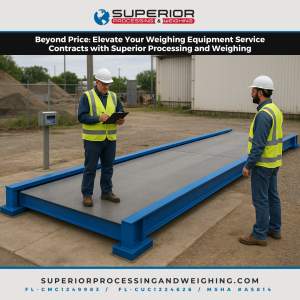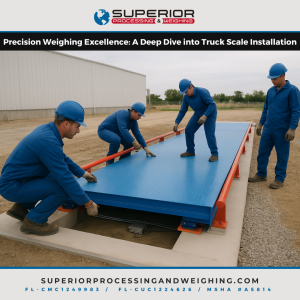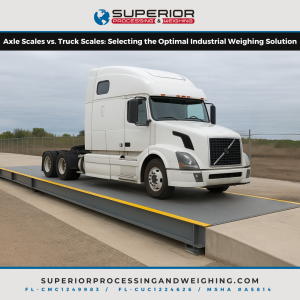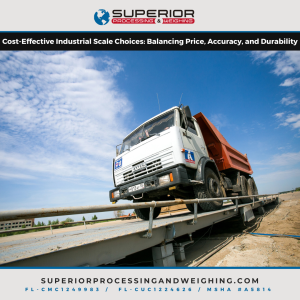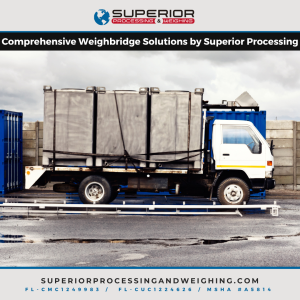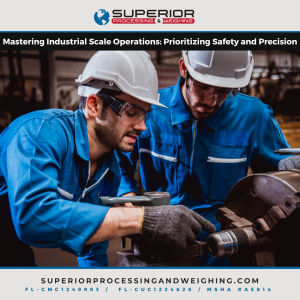The Imperative of Reliable Scales in Industry
In the competitive landscapes of manufacturing, recycling, and automobile production, precision is paramount. At Superior Processing and Weighing, we understand the critical role our commercial scales play in your business operations. They serve as silent sentinels, faithfully capturing the masses of materials that flow through your factories and facilities. Yet, even the most robust scales are not impervious to time and wear. Upgrading outdated or malfunctioning weighing equipment is not just a matter of accuracy; it’s a strategic decision that underpins your operational integrity.
Sustaining Accuracy: The Lifespan of a Scale
Industrial scales, renowned for their sturdy construction and reliable readings, can nonetheless succumb to the ravages of time. The longevity of any scale, whether it is an intricately engineered device or a robust mechanical behemoth, is contingent upon usage intensity, environmental conditions, and the rigor of maintenance regimes. It is these factors that converge to script the operational lifespan of your scale.
Diagnosing Deterioration: Recognizing a Failing Scale
Understanding the subtle yet salient signs of a failing scale can be pivotal. Despite the intrinsic differences between the operational principles of mechanical and electronic weighing systems, the symptoms of a scale in decline are universal. Whether it’s a loss of mechanical integrity or electronic efficacy, the tell-tale indicators warrant vigilant observation. In maintaining our commitment to mechanical scale expertise, we emphasize the need to recognize when these traditional instruments require attention.
Inconsistency: The Primary Indicator of Scale Health
When a scale’s readings begin to oscillate erratically for identical loads, the red flag is unmistakably raised. This inconsistency can swiftly undermine the trust in your measuring process. Indeed, a well-functioning scale should consistently revert to a zero reading once the load is removed. Anomalies in this behavior may signal a need for either recalibration or replacement, to restore the unwavering confidence in your measurements.
Comparative Inaccuracy: The Second Measure of Scale Integrity
A scale that deviates from known standards, especially when assessed against a certified counterpart, is revealing its flawed state. If regular calibration fails to realign its readings, the fault may lie deeper within the load cells or the mechanical components, corrupted perhaps by an inadvertent overload or an accidental shock load. Such discrepancies cannot be tolerated in processes where precision is not a luxury, but a requisite.
Unstable Readings: The Fluctuation Dilemma
Stability in measurement is the hallmark of a dependable scale. If your scale’s display is prone to ‘drift,’ exhibiting a capricious dance of digits, then the integrity of its electronic heart – or the static harmony of its environment – may be compromised. Ambient conditions such as temperature and humidity fluctuations can be insidious culprits, disrupting the delicate balance of precise weight computation.
Display Challenges: Ensuring Optimal Readability
A scale’s display is its communicative interface, the clear window through which its assessments are read and understood. Diminished visibility or flickering segments are symptomatic of a display in distress. Swapping batteries or inspecting power connections may offer a temporary remedy, but persistent display issues necessitate decisive action – the implementation of a more robust and legible display solution.
Corrosion: The Silent Adversary
The insidious onset of rust and corrosion is a mechanical malady commonly encountered in harsh industrial settings. Scales, like all precision instruments, are vulnerable to such environmental aggressions. These relentless forces can silently erode the structural and functional integrity of your scale, compelling the adoption of corrosion-resistant alternatives.
Evolving Needs: The Quest for Modernization
The need to replace a scale is often coupled with an opportunity to reevaluate and enhance your operational capabilities. Modern scales bring to the fore advanced features such as integrated data management and wireless connectivity, opening new vistas of efficiency and analytical depth. The profound impacts of these technological evolutions on your processes cannot be overstated.
Securing Fit and Function: The Environmental Equation
In selecting a new scale, environmental compatibility is as critical as technical proficiency. The deployment environment of the scale – be it a dry, dusty workshop or a humid production line – must be factored into your decision. The chosen scale must not only fit the physical space but also resist the environmental challenges inherent to your specific operations.
Financial Foresight: Investing Wisely
Procuring a new scale is an investment in the future of your business. It demands a careful consideration of not just the purchase price, but the long-term return on investment. The potential for reduced maintenance costs, the longevity of the new scale, and the mitigation of risk associated with inaccurate measurements all feed into the financial calculus that guides a prudent acquisition.
Conclusion: The Weight of Your Decisions
Selecting the right moment to upgrade your commercial scale is a decision underpinned by both qualitative assessments and quantifiable data. Our enterprise, Superior Processing and Weighing, stands prepared to guide you through this critical transition, ensuring that your scales serve as reliable cornerstones in your quest for excellence. In heeding the signs of wear and embracing the advancements in scale technology, you assert your commitment to precision and efficiency – the bedrock upon which industrial success is built.


